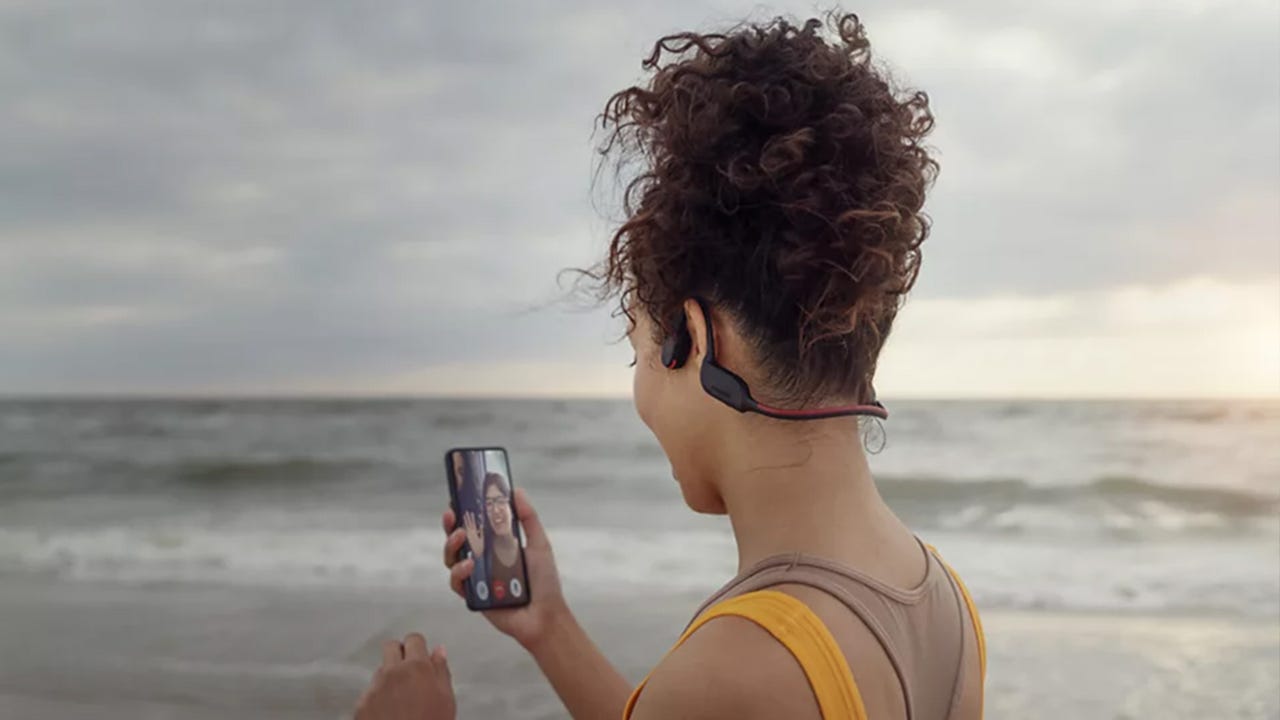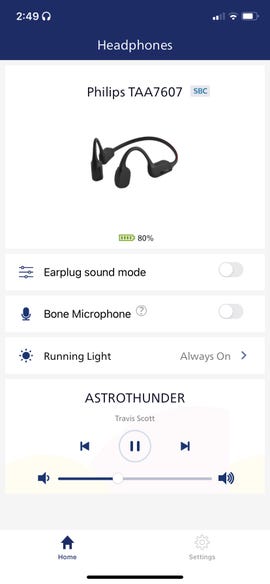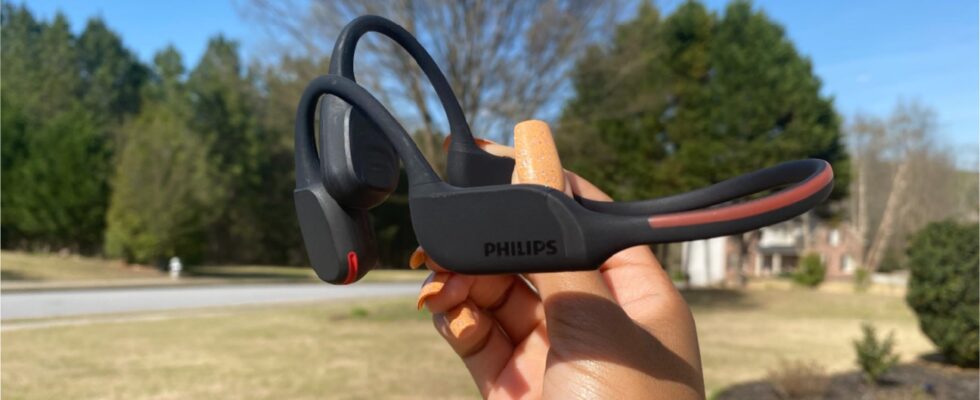For many people, a pair of headphones is essential everyday equipment. But not all helmets are convenient to take anywhere, anytime. For example, I love wearing my Beats Solo 3 headphones when I’m working or wanting to indulge myself with a music session. My AirPods Pro are great for FaceTime and phone calls. But these two pairs of headphones give me trouble when listening to music while walking outside.
I happen to be walking down a trail and, as a woman walking alone with headphones on, I’m constantly looking over my shoulder because I can’t hear what’s going on around me.
Even when my AirPods are on Transparency mode, I still feel uncomfortable about them blocking my ear canal and drowning out surrounding sounds. So I recently switched to bone conduction headphones. Specifically, the Philips Go A7607.
When running or jogging, the headphones stay comfortably in place
The operation of these headphones is simple: you hang it around your ears and the ring sits on the back of your head. With all that support, they’re incredibly light and comfortable and didn’t strain my ears after an hour or two of wearing them. If you’re like me and wearing over-ear headphones isn’t easy with your piercings, the Philips Go A7607 is a great option.
When I’m running or jogging, the headphones stay comfortably in place and I don’t have to constantly adjust them like I would with my Beats or AirPods. Most importantly, they don’t slip after sweating in the hot, humid Georgia climate.

Phillips
If you’re running or walking after the sun goes down, you can even set a bright red LED light to stay on or flash rapidly to make you visible to cars and other pedestrians. This is another safety feature that I really liked with these headphones!
Not too much pressure around or behind my ears
When it comes to the audio quality of the Philips Go, expect some noticeable compromises, as is the case with all open bone conduction headphones. Although the headphones have a high volume, they are not as satisfactory when it comes to reproducing vocals and instruments in the background. Remember, these headphones don’t dig into your ears like earbuds or in-ear versions would.

Overview of the Philips Headphones app. Screenshot by Jada Jones/ZDNET
I still liked how the bone conduction technology helped me feel the music I was listening to, by vibrating the low frequencies at my temples. And I was pleased to find that the Philips Go headphones didn’t put too much pressure around or behind my ears.
Controlling the Philips Go’s audio levels and modes requires pressing on the sides of the headset, but I preferred the ease (and lack of gestures to memorize) of the Philips headset app. The app also shows battery life, music controls, and microphone settings.
At $150, the price is steep, but I’d say it’s worth it considering its durability, safety features, and functionality. If you’re looking for headphones that you can wear to work and take straight to the gym, while still being aware of your surroundings, this is the one I recommend.
Source: “ZDNet.com”
